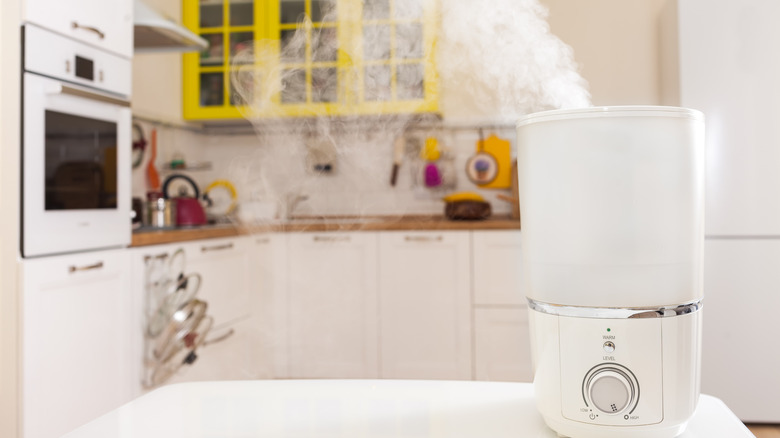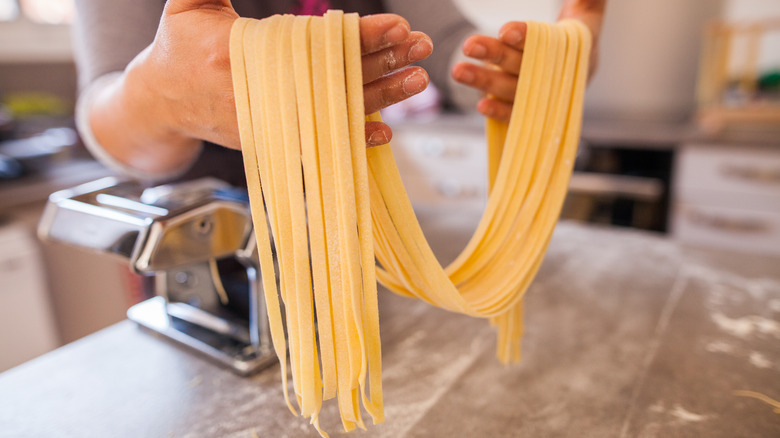How A Humidifier Can Help You Make The Best Fresh Homemade Pasta
We may receive a commission on purchases made from links.
Your homemade pasta can be as rustic or as refined as the limits of your imagination and your kitchen equipment allow. But there are some environmental factors that could curtail even the most creative chef's efforts, factors that even the fanciest dough rollers and extruders just won't be able to fix. There's a natural reason your hand-crafted pappardelle, orecchiette, and spaghetti might turn out different if you're in a desert region or closer to the coast: humidity.
Even if you're making pasta in the same fixed kitchen time after time, your results can vary depending on the season. On muggy summer evenings, there's simply more moisture in the air than on those hand-chapping, wintery nights. Too much humidity, and even the most properly rested homemade pasta dough can get sticky and hard to handle. Too little, and it could approach the dreaded crumble zone. So, when locale or just the ever-changing dew point calls for it, a standard humidifier is an easy way to regulate your kitchen atmosphere for consistent pasta production. Sure, it's a little simpler than the climate-controlling tools that some professional chefs apply in their pasta labs, but it's a step above hoping for the best.
When to use a humidifier for making fresh pasta
While we aren't all the air pressure-detecting savants of the new or classic "Twister" (the movie, not the game), most of us are familiar with humidity's tangible thickness versus the crisper feeling of a dry day. Only when making homemade pasta in the latter, more arid climes will you need to introduce a humidifier to your kitchen counter. In this case, it should also be considered as more of an equalizer than a tool or even an ingredient, as air can sometimes be when making marshmallows or meringue. (In a different situation, when cooking in a location that's too humid, you might actually want to introduce a dehumidifier to the equation.)
Rather than using a device to determine when you've brought the room close to neutral, you'll need to rely on your own senses. You still need to follow your from-heart or published pasta recipe precisely, carefully calibrating your dough's moistness throughout. A humidifier, like this small countertop model from Levoit, is simply there to get the surrounding air back to a more neutral state, one that's neither too moist nor too dry. This will position your ingredients and preparation for the best possible homemade pasta outcome.

